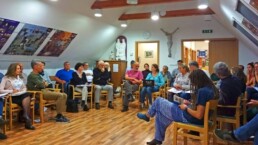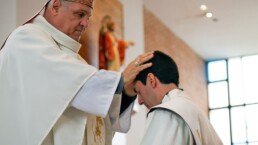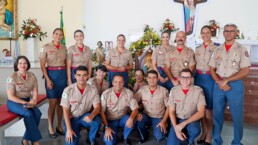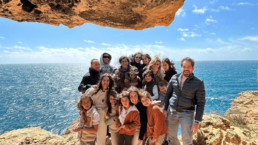„Szeretet áradjon köztünk… Let love flow between us, let love burn within us, let love fill us, we pray to you, Lord. Let us be united in our hearts in brotherly love, we are all one heart in you. Inflame our hearts in your love.”
These are the lyrics of a Hungarian song that is often sung in Hungary and also in the Hungarian Schoenstatt Family. It captures a characteristic trait of Hungarians: they are people with heart. At the same time, they are also proud conquerors who, according to legend, presumably came from the Urals on horseback many years ago and conquered the Carpathian Basin, their present homeland.
During this year’s October week, the annual conference of the Schoenstatt Family, around 60 representatives of the individual groups of the Movement set out in search of the name and mission of the National Shrine in Óbudavár on Lake Balaton. For almost 40 years, families have been meeting for conferences there, where a flourishing Schoenstatt Center has slowly grown. For 18 years, the first Schoenstatt shrine is standing there on Hungarian soil. It is a source of grace, peace and joy, a “Tabor” for countless families, young people and children.
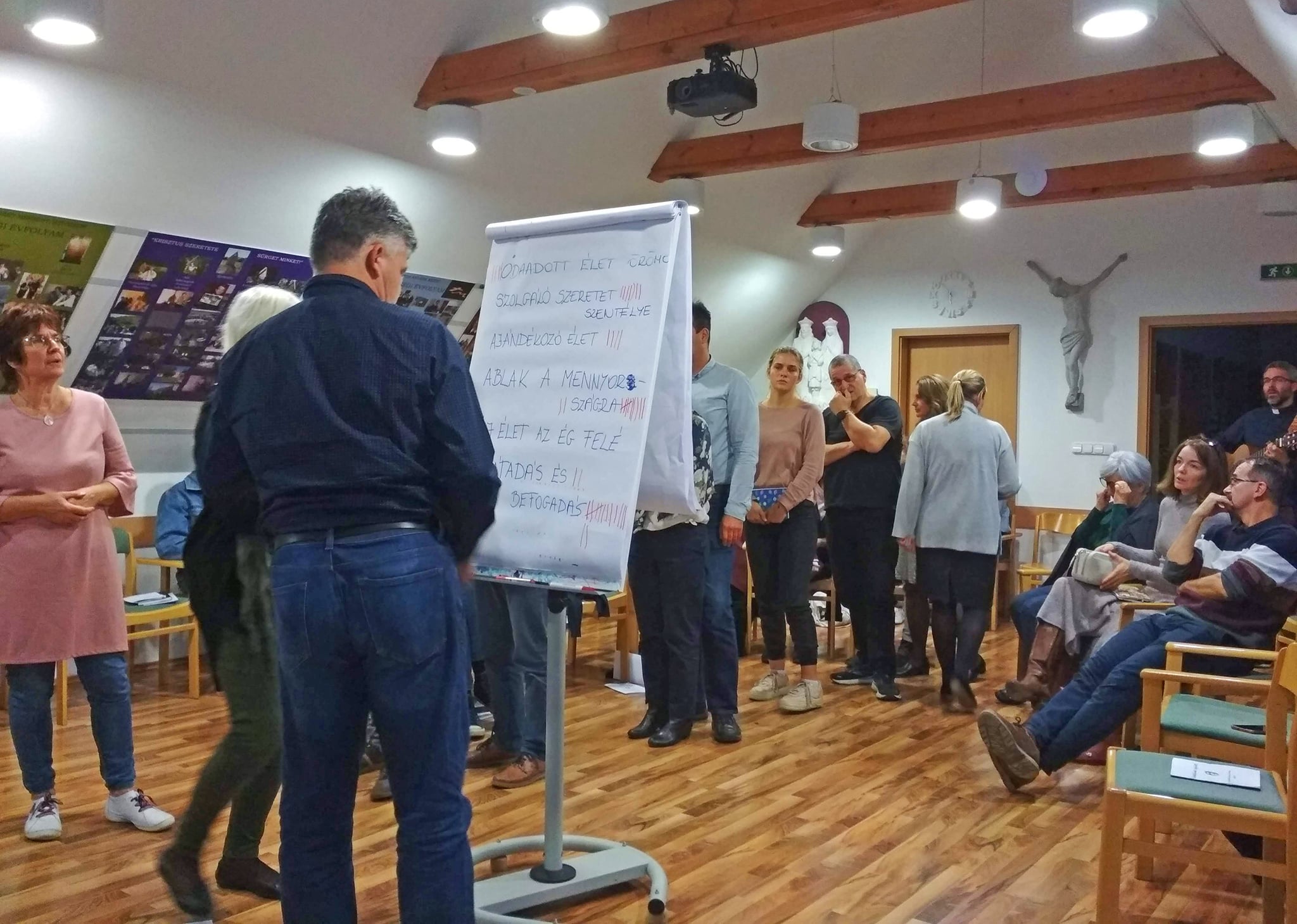
Many questions and a lot to think about
What experiences have we already had in Óbudavár? What does the shrine in Óbudavár mean to us? What are our roots, our motivation, what fruits can we reap already? How did the construction of the shrine and the center come about? How do we experience Fr. Kentenich’s charism here, especially in the growth and leadership of our community? How did the Marriage Path come about, that quickly spread far beyond the borders of Hungary? What is the goal of the second version of the Marriage Path: The Marriage Path in the Eucharistic Light? How did the Hungarian youth communities come about?
What is the cultural profile, what is the character of the Hungarians? How did our shrine come into being as the fruit of more than 100 home shrines? What does the life sacrifice of Csaba Ozsvári and many others of our loved ones mean to us? What do the symbols in our shrine mean to us: the large jug in the shrine, the Hungarian Cross of Unity, the statue of the Hungarian royal family Stefan, Gisela and Emmerich, which belong to the founding hour of the Hungarian Empire? What does the Hungarian crown of the Queen of Life, the Marian Garden that surrounds the shrine, mean to us? Everything signs of life and commitment…
Short 15-minute presentations were given about each of these questions, which vividly illustrate the rich life of the Hungarian Schoenstatt Family.
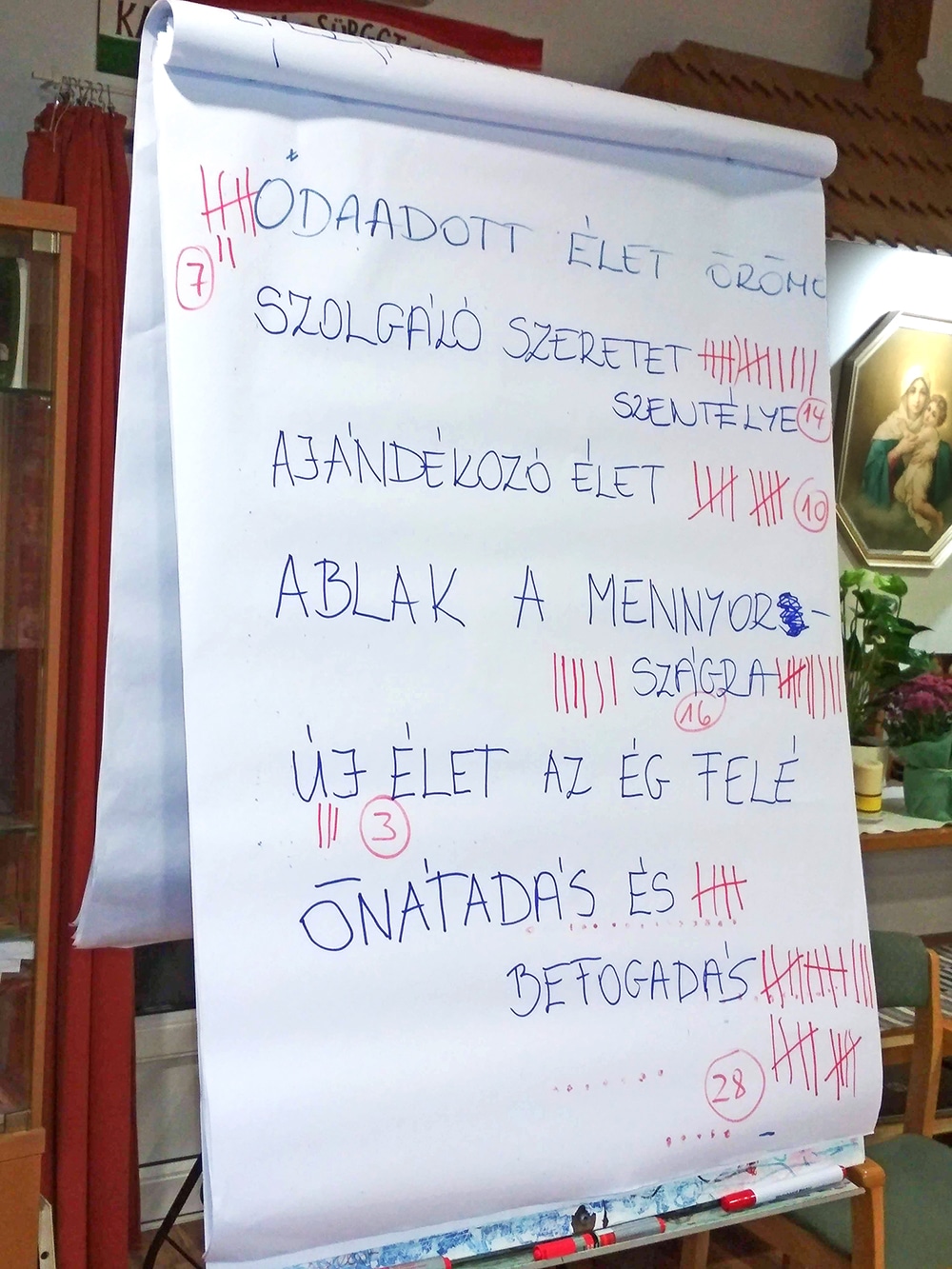
The conclusions led to the discovery of the mission of the shrine
In a next step, the values that had become important in this life process in the movement and in individual hearts were collected and arranged in large and small groups. The values and symbols that were formulated include the holy royal family, self-giving and self-acceptance, generosity, the House of Mary, “living life”, the community of hearts, reaching out to one another, unity, the network of living home shrines, the Mariengarten, the window to heaven, Sursum corda…
During the October week, the presence of the Holy Spirit and the power of unity were felt. It was like a miracle for everyone present to experience how the name and mission of the National Shrine in Óbudavar was born in “revolutionary fervor” on October 23rd (the Hungarian national holiday in memory of the Hungarian Revolution of 1956):
The shrine of “Hearts Inscribed into One Another”
The name, the mission is valid and understandable on many levels. It expresses the relationship of the married couples and the quality of relationship in general, the covenant of love, the total gift and acceptance of oneself, the Eucharistic and the Trinitarian dimension of the sacrament of marriage, the relationship with Mary in the covenant of love, the connection between the home shrines, the unity of the entire Hungarian Schoenstatt Family and the Church. Ultimately it is about the maturation of love and the covenant of love to its deepest depths, the inscription of hearts into one another, the “Inscriptio cordis in cor”. It is about a deep communion of hearts and destiny, which we have received and can expect as a grace in the shrine in Óbudavár.
„Szeretet árodjon köztünk … … Let love flow between us…”
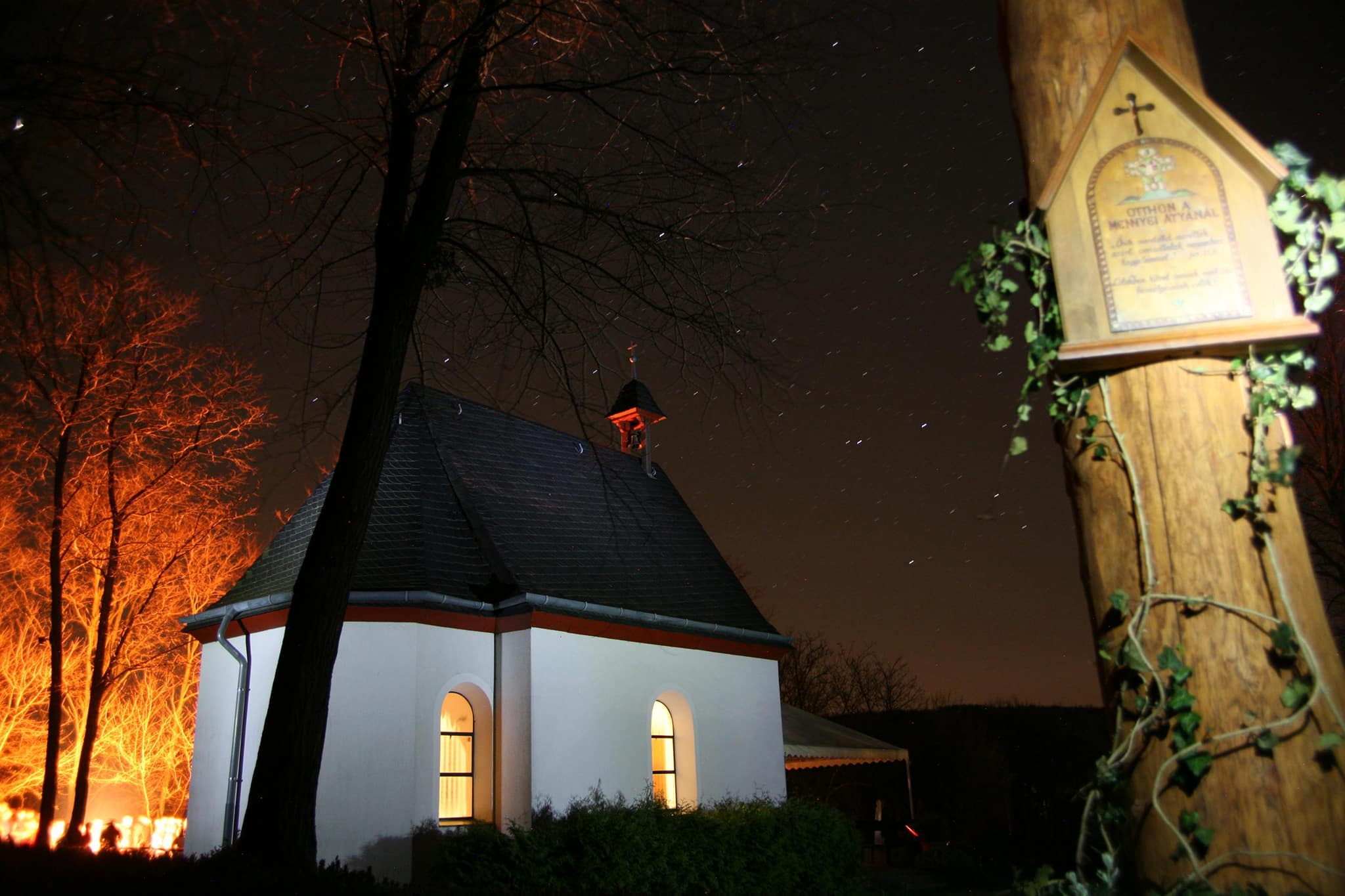
“We want to surrender ourselves to the work masters, Our Lord and Our Lady, not only by offering our will and mind and memory, but especially by offering our heart. We are not satisfied with a union of wills. Our aim is higher: We want to strive for a pronounced union of hearts, a perfect fusion of hearts, an inscriptio cordis in cor—a perfect inscription of one heart into the other.” Father Joseph Kentenich, Third Founding Document, 8.December 1944.
Related posts
April 26, 2024
First Schoenstatt Father from Mendoza, Argentina, ordained a priest
On Saturday, April 13, Agustín Ozcoidi was ordained a priest. Providence has allowed him to be the first Schoenstatt Father from Mendoza,…
April 5, 2024
The Brasilia Shrine inaugurates its Jubilee Year with a pilgrimage by the Armed Forces
We have often heard the statement: "Jubilees are times of special graces! And this statement becomes even truer when it happens during…
April 4, 2024
The unprecedented Family Missions on the island of Formentera
Formentera is sun, beautiful beaches, pubs, parties... But it is also hard work, perseverance, struggle... This is the reality, complex as…

